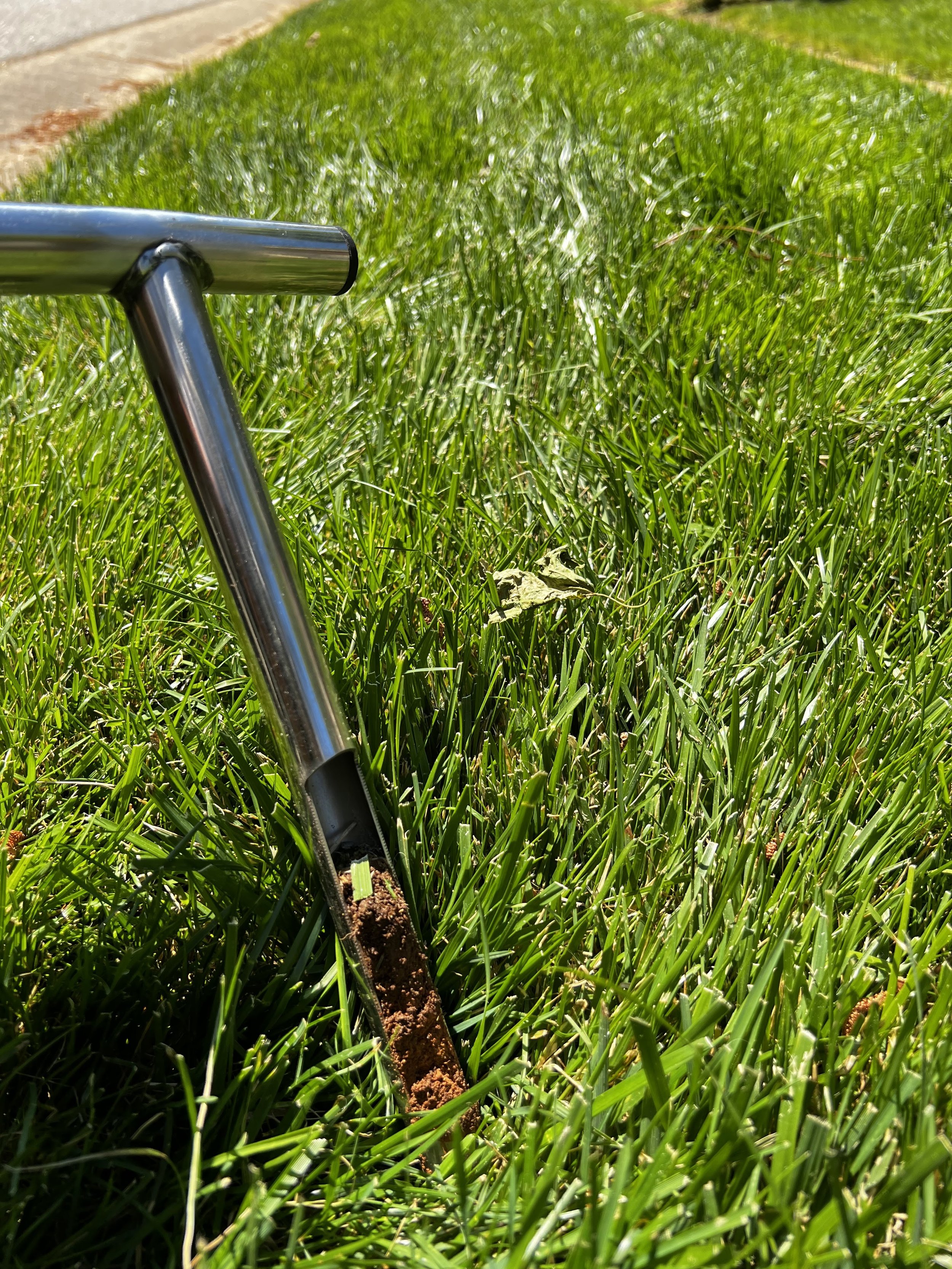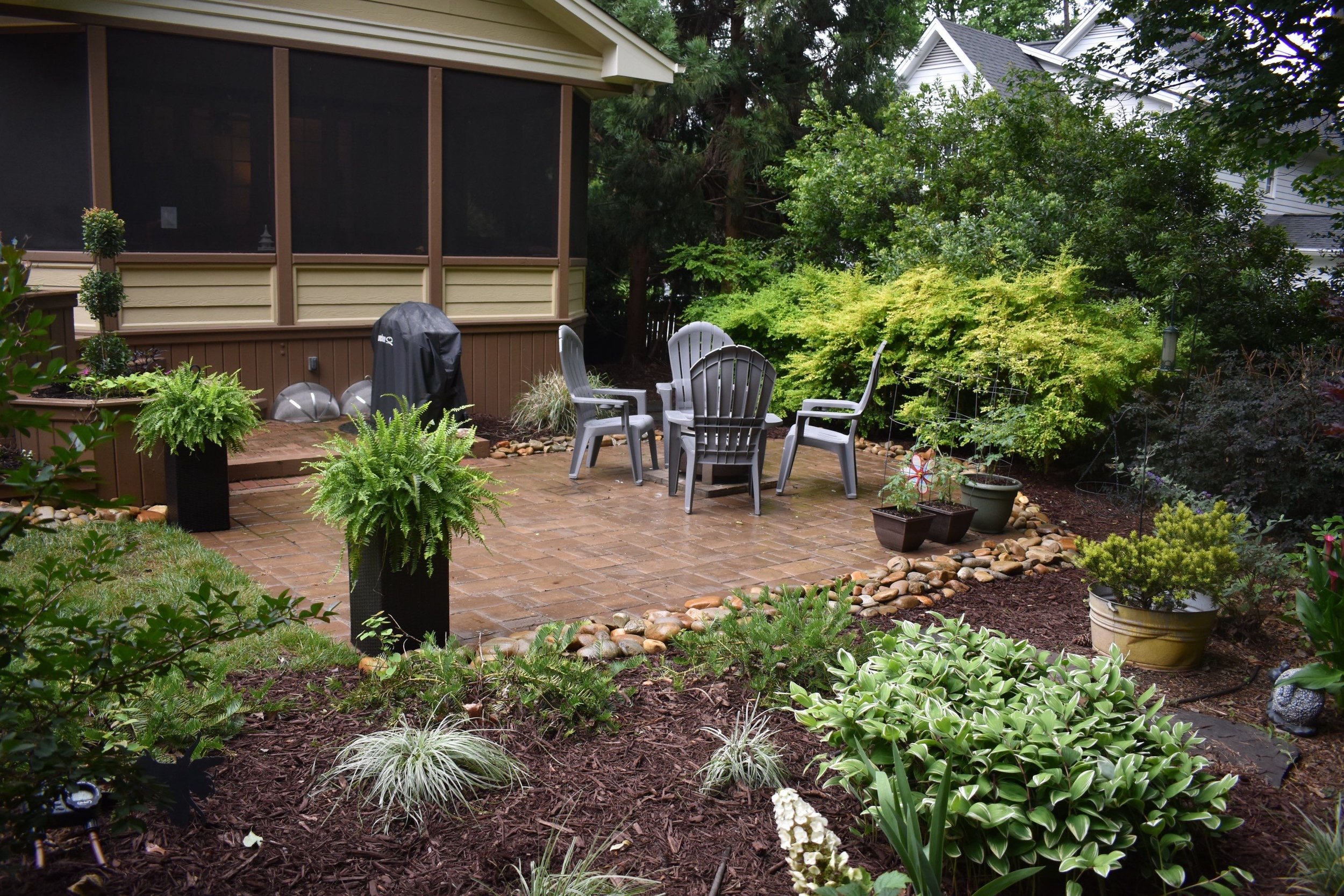
Core Aeration
Give Your Lawn Room to Breathe and Grow Strong.
Healthy turf starts from the ground up. Core aeration is one of the most effective ways to rejuvenate compacted soil, encourage stronger root systems, and improve the overall health of your lawn. We service Fuquay-Varina, Holly Springs, Willow Spring, Angier, Garner, Apex, Raleigh, and surrounding areas in North Carolina, ensuring top-quality care in your area.
Want a healthier, greener lawn without the extra work?
We’ve got you covered! Our Core Aeration service gives your grass the boost it needs for stronger roots and lasting results.
Alleviates Compaction
Compacted soil restricts root growth. Aeration loosens the soil, giving roots room to spread and thrive.
Improves Drainage
By opening pathways in the soil, water can flow more freely—reducing pooling and runoff issues.
Enhances Nutrient Absorption
Aeration allows nutrients, water, and air to reach deeper into the root zone for healthier, greener turf.
Reduces Thatch Buildup
Breaking up thatch layers promotes stronger roots and reduces the risk of pests and disease.

Lawn Aeration Pricing Calculator

Learn more about Aeration and how it benefits your lawn!
From Why and When to How - We Answer It All!
Do I need to Aerate?
Signs that your yard needs to be aerated are:
Thinning grass
Poor drainage
Patchy brown areas
Excessive thatch buildup
★ A soil test can let you know if your soil is too compact. If you have a soil test done, soil compaction is indicated by (W/V) weight per volume. If this number is greater than 1.6 g/cm³, your soil is too compacted, which restricts root growth.
When should I Aerate?
The ideal timing for aeration services depends on your grass type.
Warm-season grasses, like Bermuda, Zoysia, and Centipede, should be aerated in the Spring
Cool-season grasses, like Fescue, should be aerated in the Fall.
★ Aerating during the appropriate growing season, allows the grass to undergo less stress, quickly recover, and have better overall lawn health.
How is Core Aeration done?
Core aeration is completed using a specialized machine that removes small plugs of soil. These plugs are left on the lawn surface, where they will break down, reintroducing organic matter and nutrients into the soil. Core aeration relieves compaction, allowing water, air, and nutrients to penetrate the soil, leading to a healthier lawn.
We highly recommend pairing Aeration with a Soil Test. Aeration opens up the root zone, making it the perfect time to analyze your soil and add the right organic matter or fertilizers. This ensures nutrients reach the roots quickly for the best results.
Recommended Additional Services
At LandGreen Landscaping Inc., we offer more than just aeration. To maximize results, we also provide complementary services. Let us know which options you’d like to add, and we’ll customize a plan to give your lawn the strongest foundation possible.
FAQs
-
A: Yes, we recommend mowing beforehand. This keeps your lawn neat and gives it plenty of time to recover after aeration without becoming overgrown.
-
A: Yes, we recommend marking irrigation heads or other obstructions with flags.
-
A: For most lawns in our service area, we recommend aerating once a year, typically in the fall for cool-season grasses like fescue and in late spring for warm-season grasses like Bermuda and Zoysia. If your lawn experiences heavy foot traffic or soil compaction, aerating twice a year may be beneficial.
-
You may notice some immediate improvements in water absorption and soil structure, but the most significant results, like increased turf density and improved color, typically become visible within a few weeks, especially if combined with proper fertilization and overseeding.
-
A: It’s best to water your lawn the day before aeration to soften the soil, allowing the aerator to remove deeper cores. After aeration, continue watering as needed to support recovery and encourage new root growth, especially if you’re overseeding.
-
A: Yes, but it’s best to wait a couple of days to allow the soil plugs to begin breaking down. If you’re overseeding after aeration, avoid mowing for at least 10 - 14 days to give the new grass a chance to establish.





